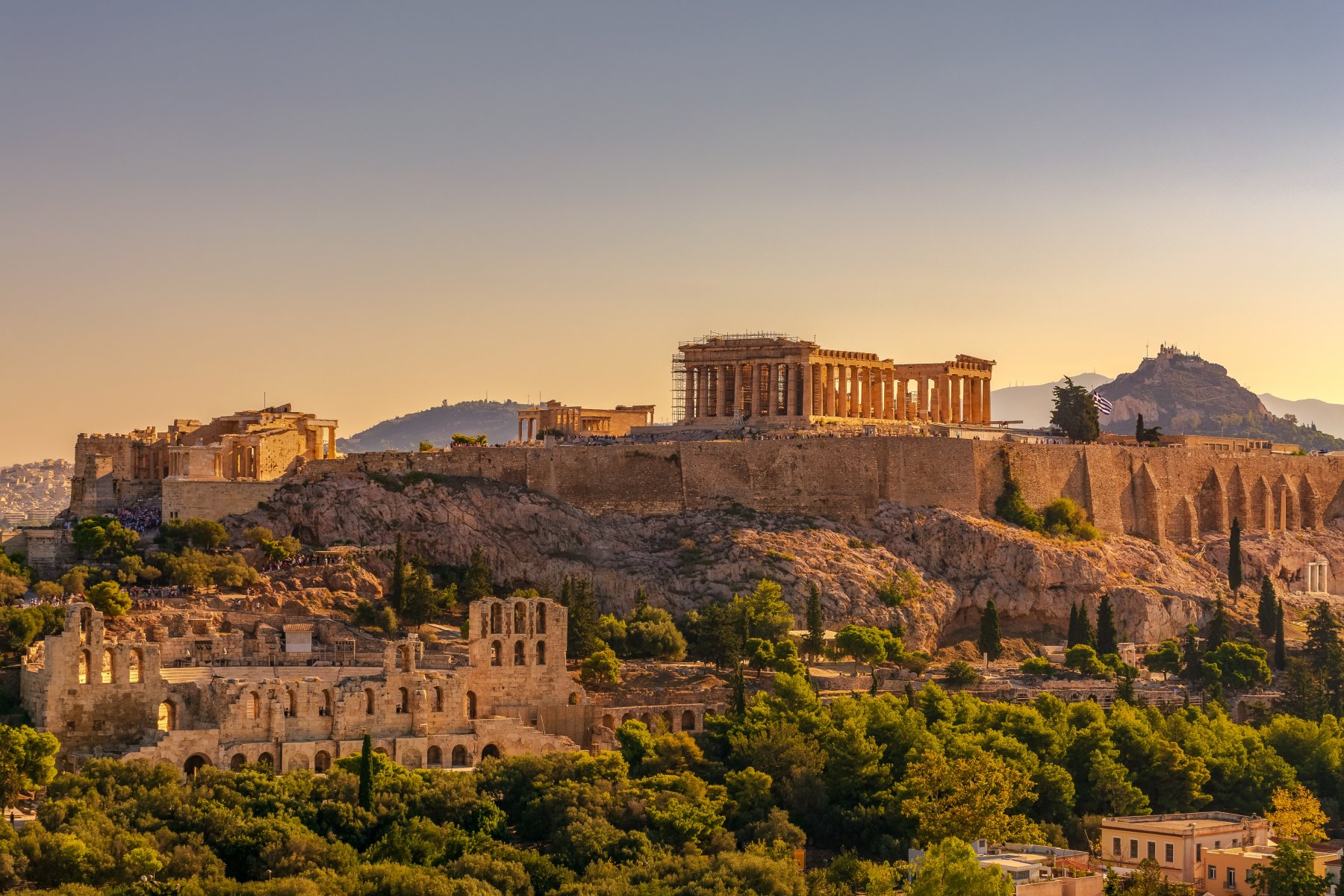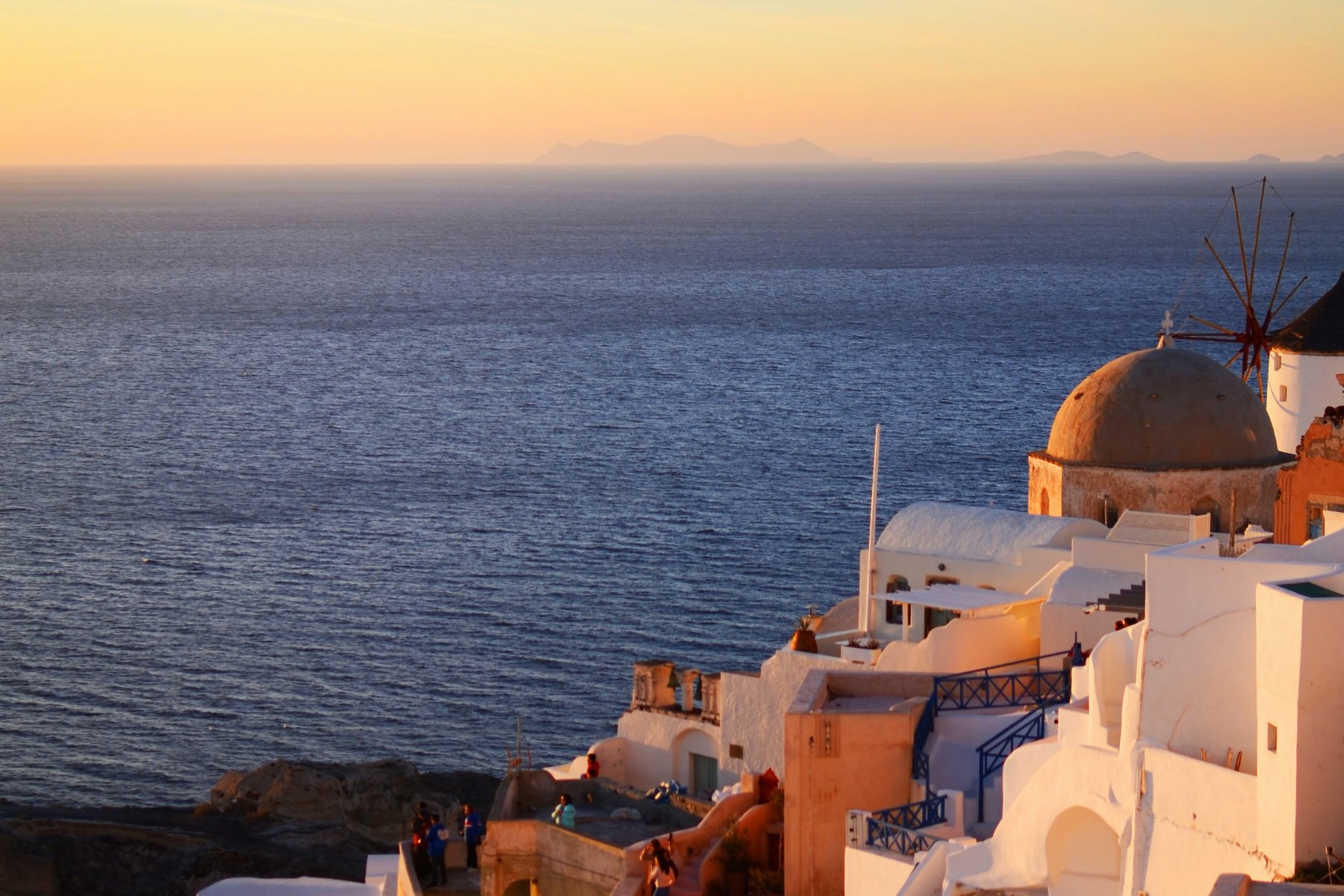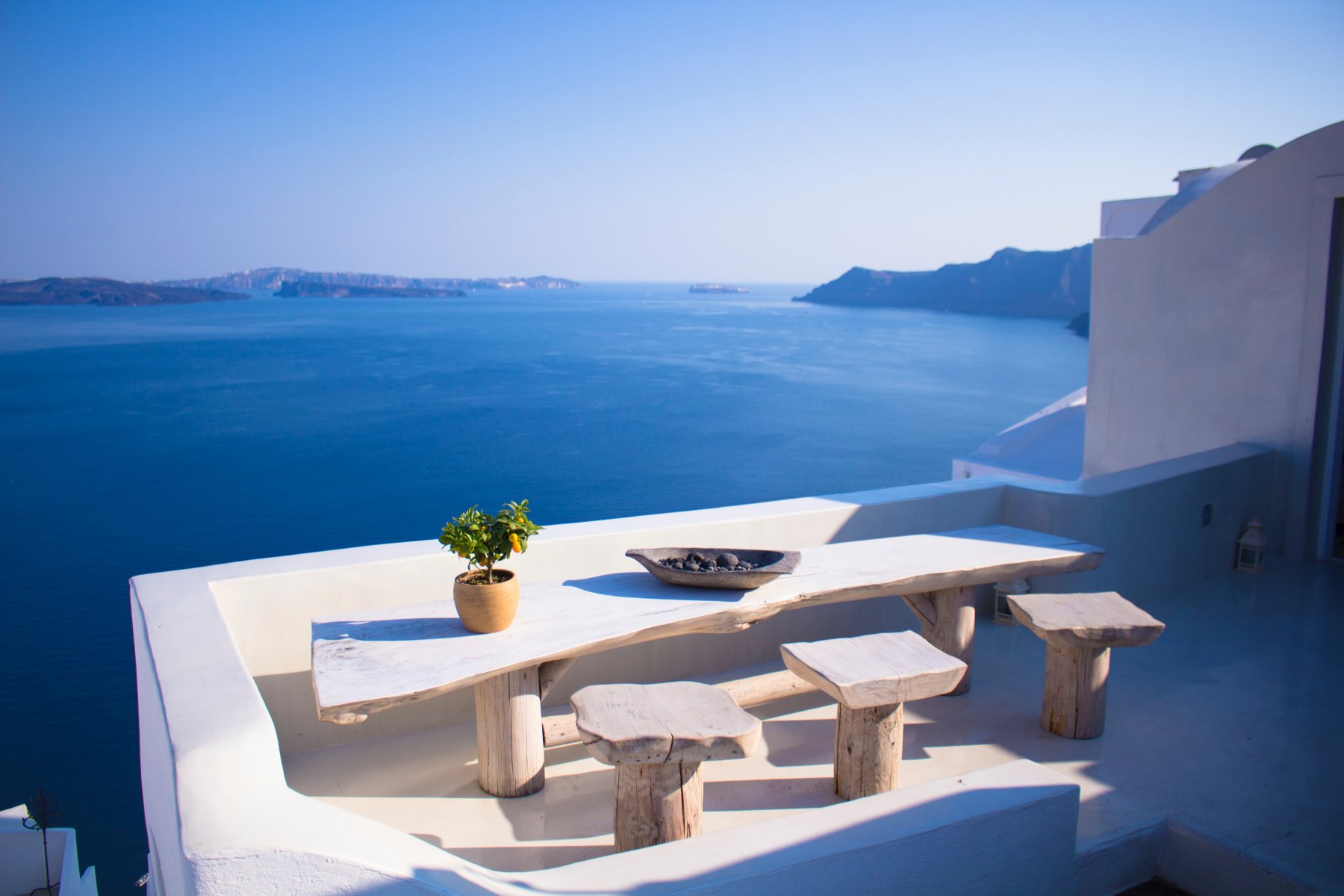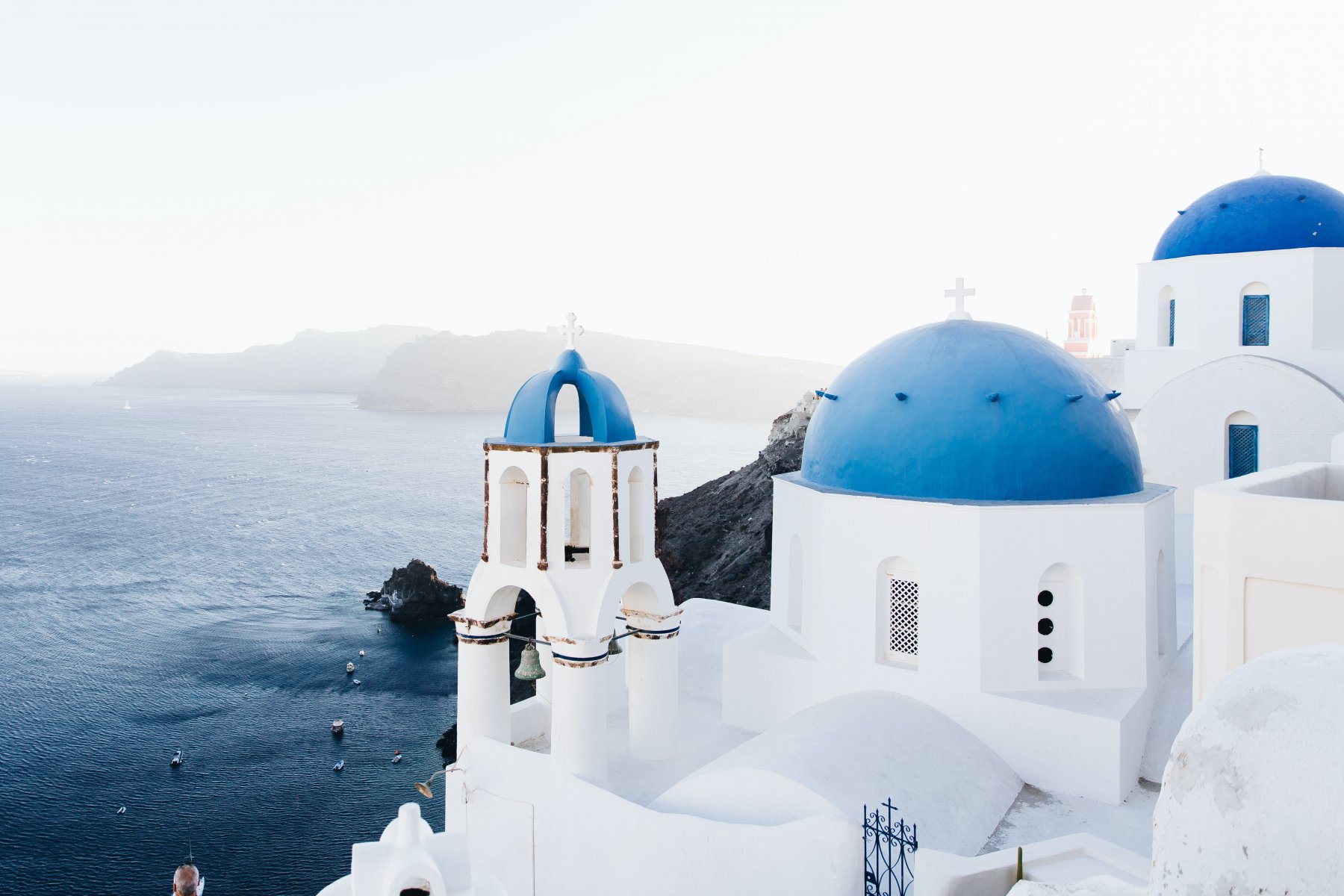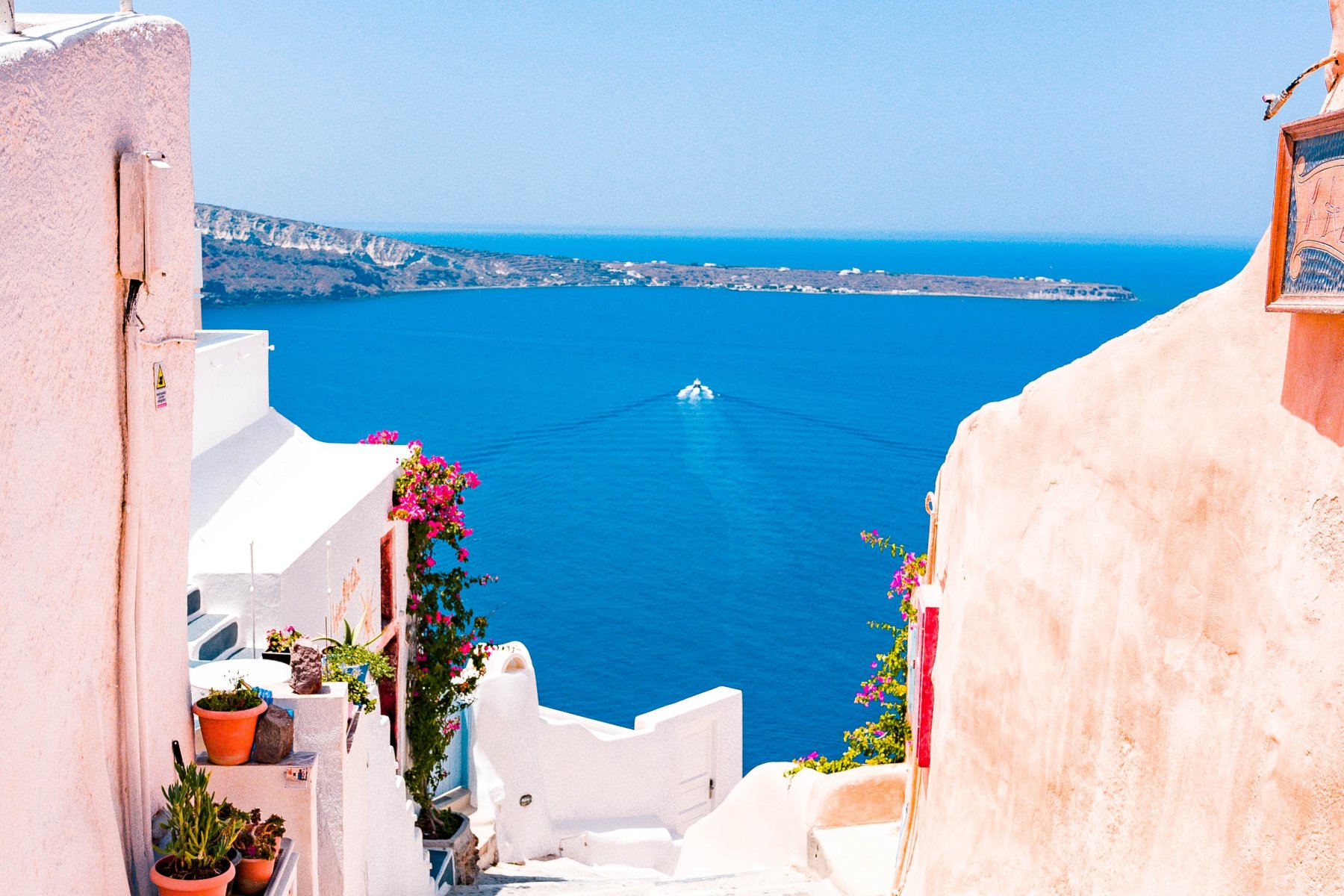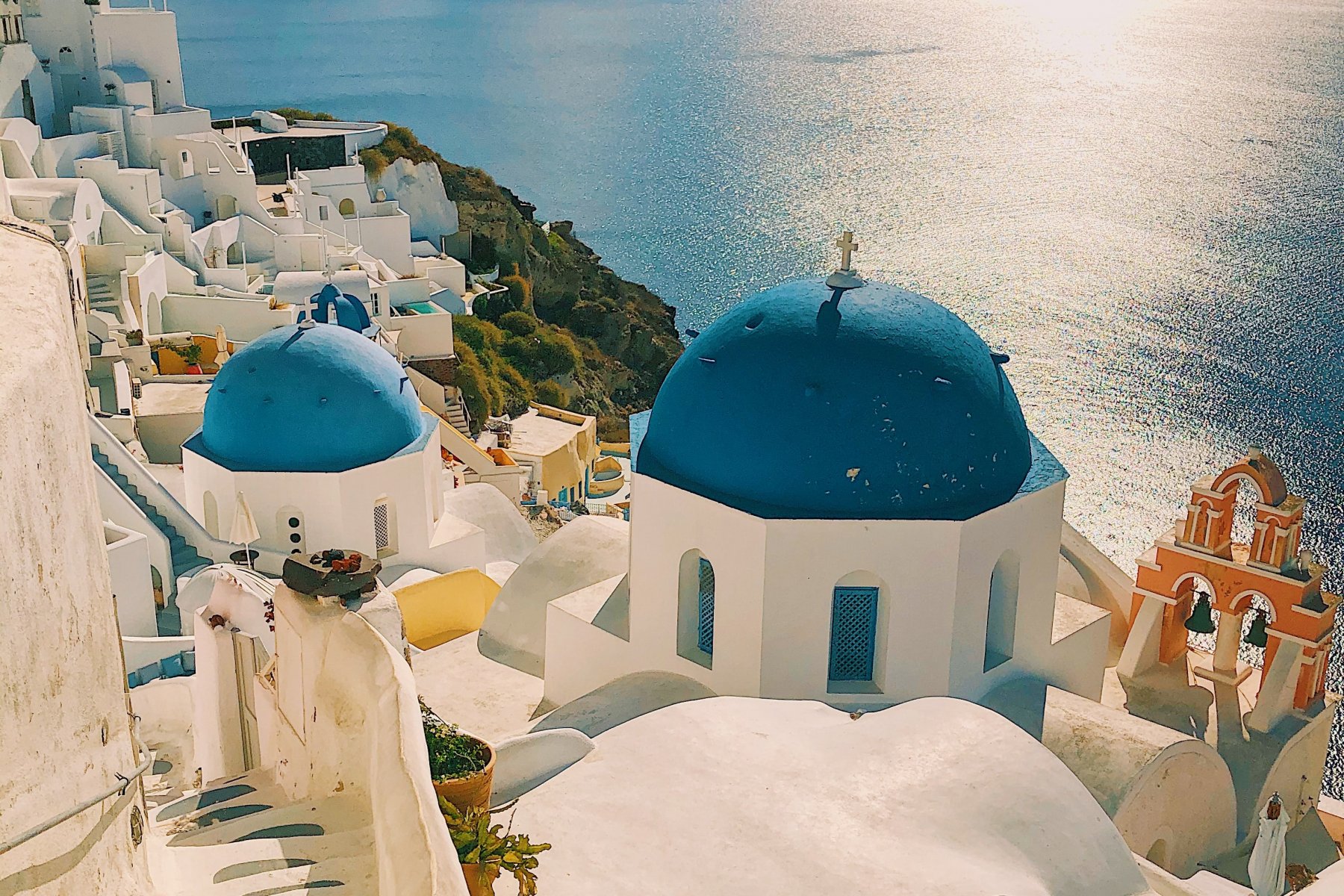Routes
Greece
Greece is a blessed country
Greece is a blessed country with more than 10.000 miles of coastline and some 1.500 islands, Greece caters to all tastes. The ideal sailing ground for yachtsmen, Greece offers a wide variety of island groups to suit all tastes. It is a country of white – washed houses, colourful fishing villages, crystal clear waters, sandy beaches, waterside taverns and a cultural paradise offering numerous attractions. The Greek islands make up 20% of the total area of Greece, an ideal yachting area, creating a coastline of more than 15000 kilometres. The climate along this coastline is Mediterranean in character: mild moist winters and dry hot summers. The long charter season starts as early as March when air temperatures rise. July and August peak in high temperatures and sun hours – the high season for chartering! In Oct/Nov frontal systems – followed by cool air masses – start entering the East Mediterranean from the north.
The Saronic & Argolic Gulf
The Saronic & Argolic Gulf
Poros
Called Kalavria in ancient times, was the island of Poseidon, god of the sea. The town of Poros is actually an island in itself separated by a small canal from the rest of the island. In ancient times it was two islands, Spheria and Kalavria, which gradually joined by an isthmus of sand. Kalavria, the larger island was wooded and had lots of water. Spheria, which is now Poros town, was a volcano. The approach by sea is probably one of the most beautiful in Greece.
Hydra
Hydra is perhaps the most beautiful port village in all of Greece. A tiny harbour ringed with cafes, restaurants and gold shops is surrounded by a village of stone houses and villas that rise up the hills like an amphitheatre. But one of the best things about Hydra is that there are no cars. Everything is transferred and moved by donkey, including groceries, building supplies, people and their luggage.
Spetses
Unforgettable scenes of natural beauty are created by the harmonic combination of crystal clear waters and ageing pine trees. Countless picturesque coves, around the island of Spetses offer visitors moments of peace and tranquillity. Either by land or sea various forms of transportation make every part of the island fully accessible.
Aegina
The most important archaeological site lies to the east of the island near Agia Marina, where the temple of Aphaia, a very ancient goddess once patroness of Aegina is situated. The first temple was erected in 570 B.C. and destroyed some sixty years later. The temple whose remains we see today was built on the same spot out of limestone from the vicinity. Traces of the original temple can be seen in the foundations of this Doric building.
The Peloponnese
Monemvasia
Monemvasia occupies a steep, rocky islet connected to the Laconian coast by a bridge. The inhabitants of Laconia founded the settlement in the 6th century A.D. A second settlement was later founded on a lower level, and gradually developed into a town of significant strategic importance. Located in the main square of Monemvasia is the largest surviving Byzantine church in southern Greece. It is directly opposite the small, domed church of Agios Petros, which houses a modest museum of archaeological finds from the town.
Gerolimenas
Gerolimenas is a very nice port that faces south of Mani, which is bordered to the west side by a high cliff that goes on for a few miles. Full of stone houses right next to the tranquil sea, it is the site for exploration of the deep Mani. To the north lie the towers of Kita and Nomia and to the south the village of Alika among the prickly pears. A little further on, one will find the cape of Kiparissos, were a temple which was worshipped to Poseidon once stood. It is with a small boat that one can sea the cave of Hades, the entrance to the underworld, according to Greek Mythology.
Katakolo
The first Olympic games were held here in 776 BC and reached their height of popularity in 576 BC. The festival was open to only Greek born men but later Romans were allowed to compete most likely because they were running the country by then. Slaves and women were not even allowed to be spectators and women caught sneaking in were thrown off a cliff. The events included foot races, wrestling, discus, javelin, long jump, horse and chariot racing, and a type of boxing called pancratium. There were not only athletic events but also writing, poetry and history readings, plus business transactions and treaties were made between leaders of city-states. There was no television, so unlike modern Olympics spectators were able to see all the events. The games were banned in 426 by the emperor Theodosius II because they were pagan, and the temples were destroyed. They were begun again in 1896 in Athens. The modern village of Olympia, located near the port of Katakolo, itself is a collection of tourist shops, cafes, restaurants and a Historical Museum of the Olympic Games.
The Sporades
The Sporades
Skiathos
Skiathos is the smallest of the Sporades islands, eight miles long and six miles wide, and lies closest to the Greek mainland, six miles away. For such a tiny island Skiathos has a great deal to offer, despite being only around four miles by seven, it boast between 60-70 fine sandy beaches and coves, many of which are wonderfully tranquil as well as sublimely beautiful.
Skopelos
Skopelos is one of the most beautiful Aegean islands. It has two main towns. The capital and chief port, also named Skopelos, is a complex and delightful cobblestone maze stacked up against a hillside. The best way to arrive is by the sea, slowly revealing the town as the boat pulls into the harbour. The houses are jammed together along narrow and oddly curving alleys, their windows capriciously placed and their balconies awash in flowers. The waterfront is lined with tavernas, cafes, tourist offices and boutiques. A stroll to the top of the town brings you to the oddly whitewashed ruins of the Venetian castle. Glossa is the island’s second town, a winding three kilometres up the hill from Loutraki which happens to be a small port with a thin pebble beach. It is another whitewashed delight and considerably quieter than the capital. The rest of the island is rich in vegetation, with wind-swept pines growing down to secluded coves wide beaches and terraced cliffs. The most popular beaches are all on the sheltered southwest coast.
The Ionian
Patra
Patra is the capital of the region or prefecture. It owes its name to Patreas, chief of the Achaians. The city is among the most important in Greece, and the largest in the Peloponnese. It is also a major transportation center, linking the country with Italy and the Peloponnese with the Ionian Islands. The city extends from the shore up to the Castle. It is divided into two parts, the upper and the lower, whose layout, parks and plazas give it a definite distinction. The old city, at the foot of the castle, still has quite a number of attractive neoclassical houses, while the lower city has many mansions, such as those housing the Municipal Theatre, the Odeon, etc. The city’s innumerable pastry shops, its quiet little cafes, its wide range of tavernas, its lively streets thriving with locals, foreigners and transient travelers complete the picture of Patra as a lively bustling port-center much celebrated thought out Greece.
Zakynthos
Zakynthos is the third largest of the Ionian Islands and its terrain is varied; there are fertile plains in the south-eastern part, which merge gently into peaceful bays and golden beaches while the western side of the island is mountainous with steep cliffs along its coasts. The mild, Mediterranean climate and the plentiful winter rainfall present the island with dense vegetation. Olive oil, currants, grapes, citrus fruit are principal products. The capital, which has the same name as the prefecture, is the town of Zakynthos -apart from its official name it is also called Chora-.
Kefallonia
Kefallonia is the largest island in the lonian, is a land of contrasts. Just for starters don’t miss the view from the castle at Assos. Of the old, immensely attractive city of Argostoli, the capital, which was destroyed by an earthquake in 1953, very little remains; one or two houses, the arched bridge stretching across the lagoon and the obelisk at its centre, which commemorates the date of its construction. During your stay there you could visit the interesting Archaeological Museum and the Folk Art Museum. Kefallonia is one of the few places where the rare turtle Caretta-Caretta lays its eggs.
Ithaki
Ithaki is famous as the island of Odysseus and corresponds closely to the descriptions in Homer’s Odyssey. The interest, though, of the archeologists is focused on the period when the king of the island was Odysseus at around the 12th century BC It was during that period that the Greeks were off to conquer Troy.
The Cyclades
Mykonos
One of the most cosmopolitan of all the Greek islands, Mykonos, has an international reputation and quite justifiably attracts a large number of tourists from all over the world. Amongst them many intellectuals and well-known artists prefer Mykonos for their vacation. The capital Chora, with its colorful harbor in which little fishing boats nest happily side by side with luxury yachts, presents quite a different picture from that of the majority of Aegean island towns. One of the most charming districts of Chora is Little Venice with the picturesque houses of the island’s sea captains, built right on the rocks lashed on by the sea. The mascot of the Island is a Pelican, called Petros, and has been called Petros since time immemorial, obviously many re-incarnations since the first edition. It can be seen trying to bite tourists at the port.
Delos
Delos was the religious capital of the Ionians in 1,000 BC. Greek mythology recounts how Leto, one of Zeus’s lovers, gave birth to Apollo on Delos, god of physical beauty and the fine arts. By 454 BC the Athenians had overtaken the Ionians, forcing Delos to pay taxes and provide ships to Athens. Delos greatest period was in the third to fourth century BC, when the tiny island had a population of 20,000 and was the chief financial center and slave market in the Mediterranean. Foreigners from Rome, Syria and Egypt built homes and coexisted tolerantly, despite the variety of religious beliefs.
Paros
Paros is the third largest of the Cyclades after Naxos and Andros and has developed into an important center of tourism in recent years. Gently rolling hills surround the centre and southeast of the island, which is predominantly agricultural and is occupied by endless vineyards, and lock within themselves the famous Parian marble.
Santorini
As you approach Santorini by the sea, it’s easy to imagine the cataclysm that gave birth to this astonishing Greek Island that has become such a popular tourist destination. The boat edges between bare islands of volcanic rock and the crescent shaped remains of the volcano, today’s Santorini, with its sheer black cliffs rising 200 metres out of the sea. Santorini consists of three islands: Thira, Thirasia and Aspronisi Besides the interesting architecture of the houses in Thera, it is worth visiting the two cathedrals (the Orthodox and the Catholic) and the Monastery of the Dominican nuns. The Catholic monastery of Panagia of Rodari which was built in the area of Skaros where the medieval capital of the island used to lie surrounded by a strong fortress on the edge of a steep hill and the Venetian building Gizi are worth a visit. Santorini has magnificent beaches. Out of the ordinary “tropical style”, the island has to offer unique places to swim. Beaches where the sand is black, red, or white, the sun is hot, and the sea is deep blue and crystal clear.
The Dodecanese
Samos
Samos’s location played a great role in its development. It lies in the Eastern Aegean, very close to the coast of Asia Minor, in the heart of Ionia, almost midway along the sea route that links Greece with Anatolia, the Black Sea, Egypt and the Eastern Mediterranean. The capital, Samos Town or Vathi, is built on the verdant slopes that surround the island’s deepest bay. It has retained its individual appearance, with its attractive neo-classical houses, old mansions with pastel facades.
Patmos
Patmos is of volcanic origin and has a much-indented coastline. An isthmus only a few hundred meters wide, on which the island’s harbor lies, separates the north end of the island from the southern half. The “Jerusalem of the Aegean” is one way of describing Patmos or Patnos, as it was referred to in one 5th century inscription. It was here that St. John the Theologian was exiled between 95 and 97 A.D. and was inspired to write the Book of Revelation or Apocalypse.
Kos
The island of Kos is famous as the birthplace of Hippocrates, the father of medicine, Kos is also known for its lovely, gentle scenery. It is both lush and fertile, with an abundance of springs and streams, gorgeous beaches and a marvelous climate.
Simi
According to Homer, Simi contributed three triremes (i.e. warships) to the Trojan War. Simi’s reputation for shipbuilding survived from that remote period down to the end of the 19th century, when the island had some 30,000 inhabitants, prosperous as a result of commerce and sponge fishing. Today it builds only fishing boats and small ‘caiques’ and the population does not exceed 4,000 – most of them engaged in fishing or sponge diving. Apart from the peace and typical Aegean island beauty which Simi has to offer, there is a Byzantine castle above the town containing a church, dedicated to Our Lady, with fine murals. Near the church are the remains of an ancient temple of Athena. However, the best known sight of the island is the Bay of Panormitis with the Monastery of St. Michael, dating from the 18th century. The carved screen inside the church is covered with votive offerings in gold and silver. The monastery of the Archangel Michael Panormitis is one of the island’s most famous landmarks, built in the early 18th century overlooks a beautiful bay. The entirety of Yialos, the main port of Simi, has been declared a protected architectural treasure, and for good reason. This pristine port with its extraordinary array of neo-classical mansions is a large part of why Simi is known as “the jewel of the dodecanese.”
Rhodes
Rhodes is the third largest Greek Island and, officially, the sunniest place in Europe. The city is among the finest, not only in Greece but also in the whole of the Mediterranean. It is situated at the island’s most northerly point and ringed by sea on the east and west. Rhodes (Rodos in Greek) combines the cosmopolitan character of a contemporary city with the picturesque of a medieval town, giving the impression of having been untouched by the passage of time. Rhodes has a many of sites to offer its visitors, listed you will find the three most important: The ancient city of Rhodes was built amphitheatrically, before the port of the modern city, in 408 BC by Ippodamus. The roads were decorated with statues, the most beautiful being the statue of Ploutos. In the city stood magnificent temples, the most prominent being the temples of Helios and Isis. Ancient Kamiros, brought to light by excavations in 1929, was one of the three powerful ancient cities of Rhodes. It was called “The Greek Pompeii” because nobody knows how the city was deserted and buried underground. The magnificent Venetian Castelllo Castle dominates the traditional village of Kritinia. Built by the knights in the 16th century BC on a precipitous cliff to fortify the western coast of the island.

